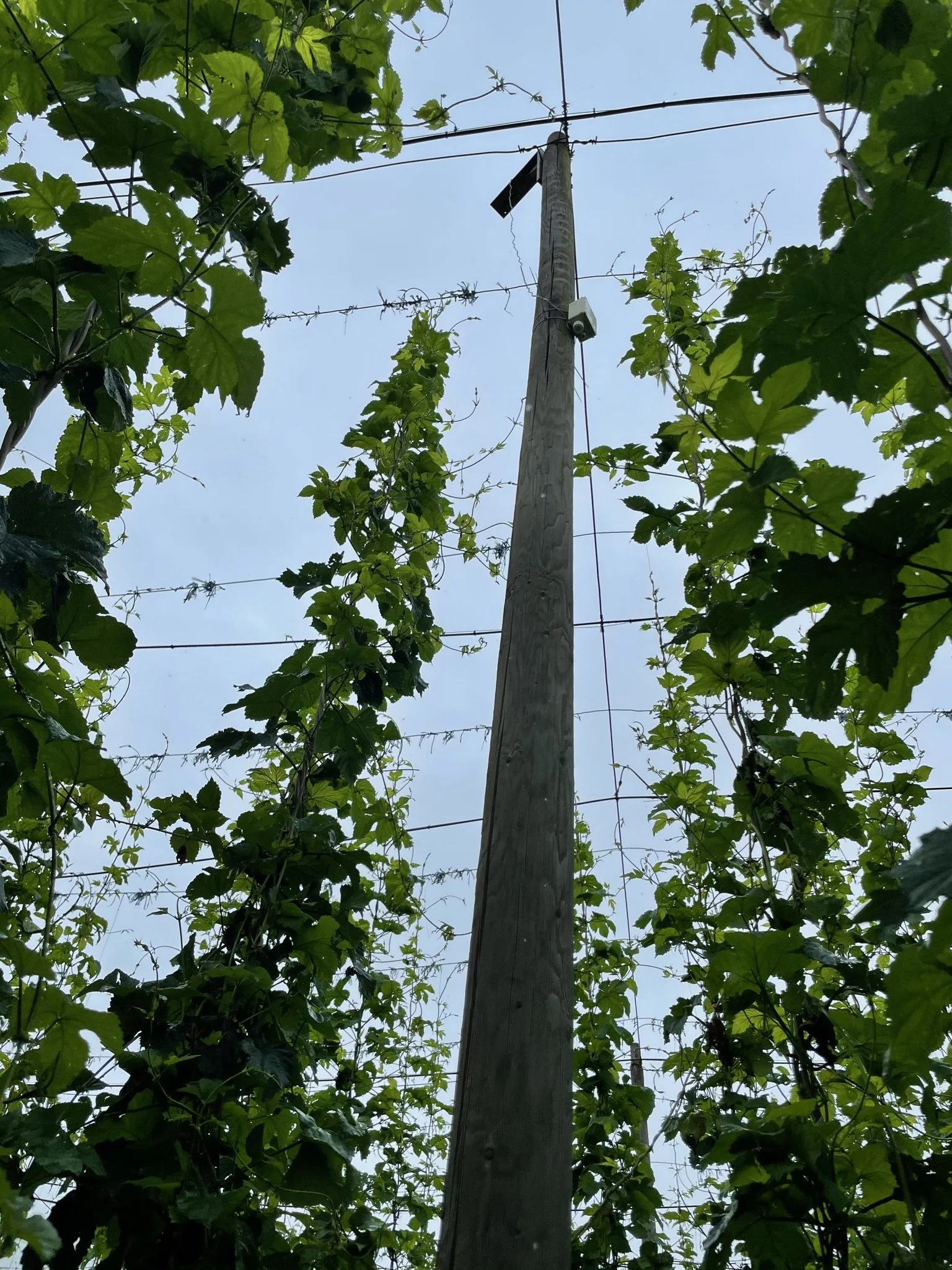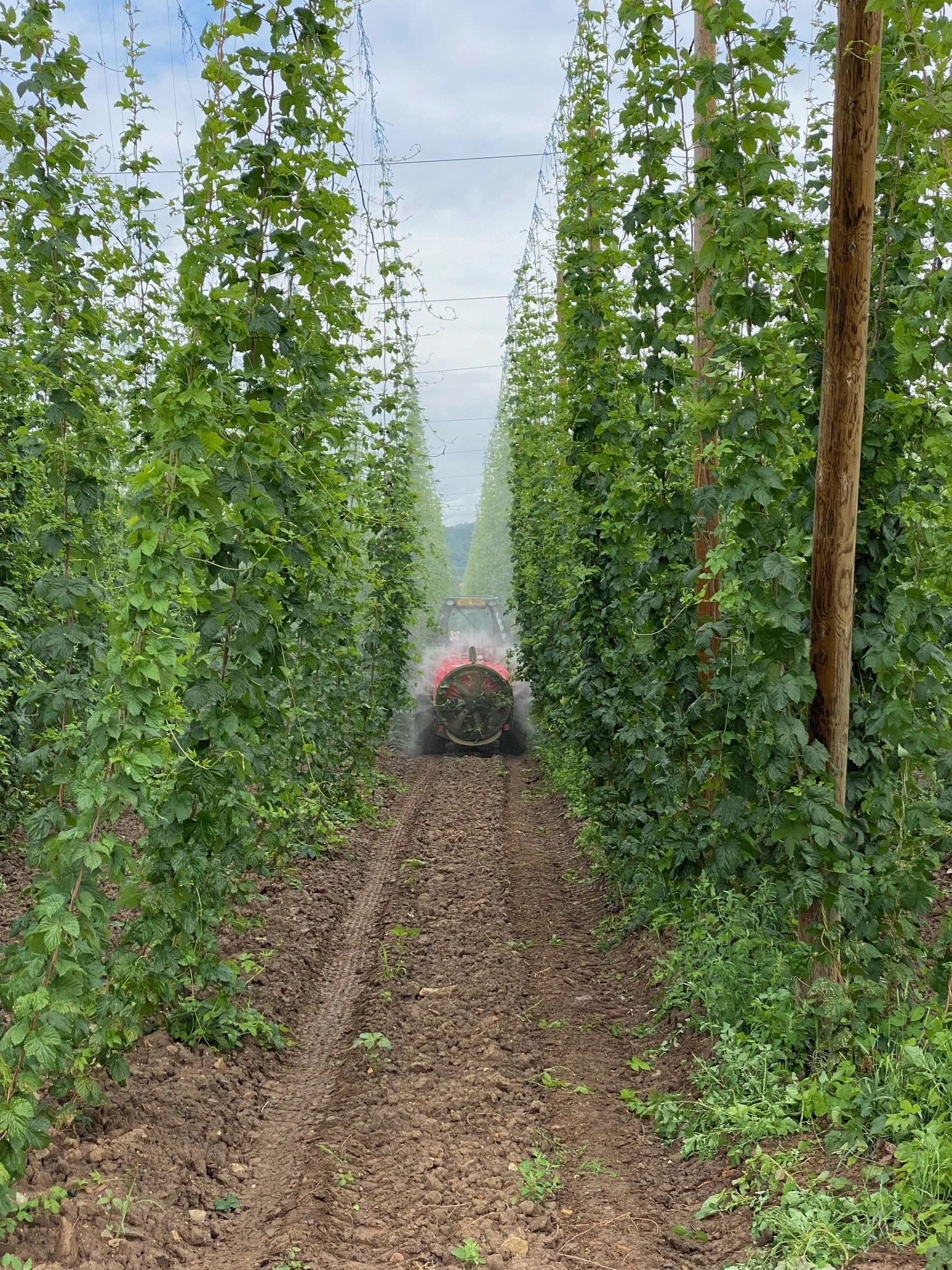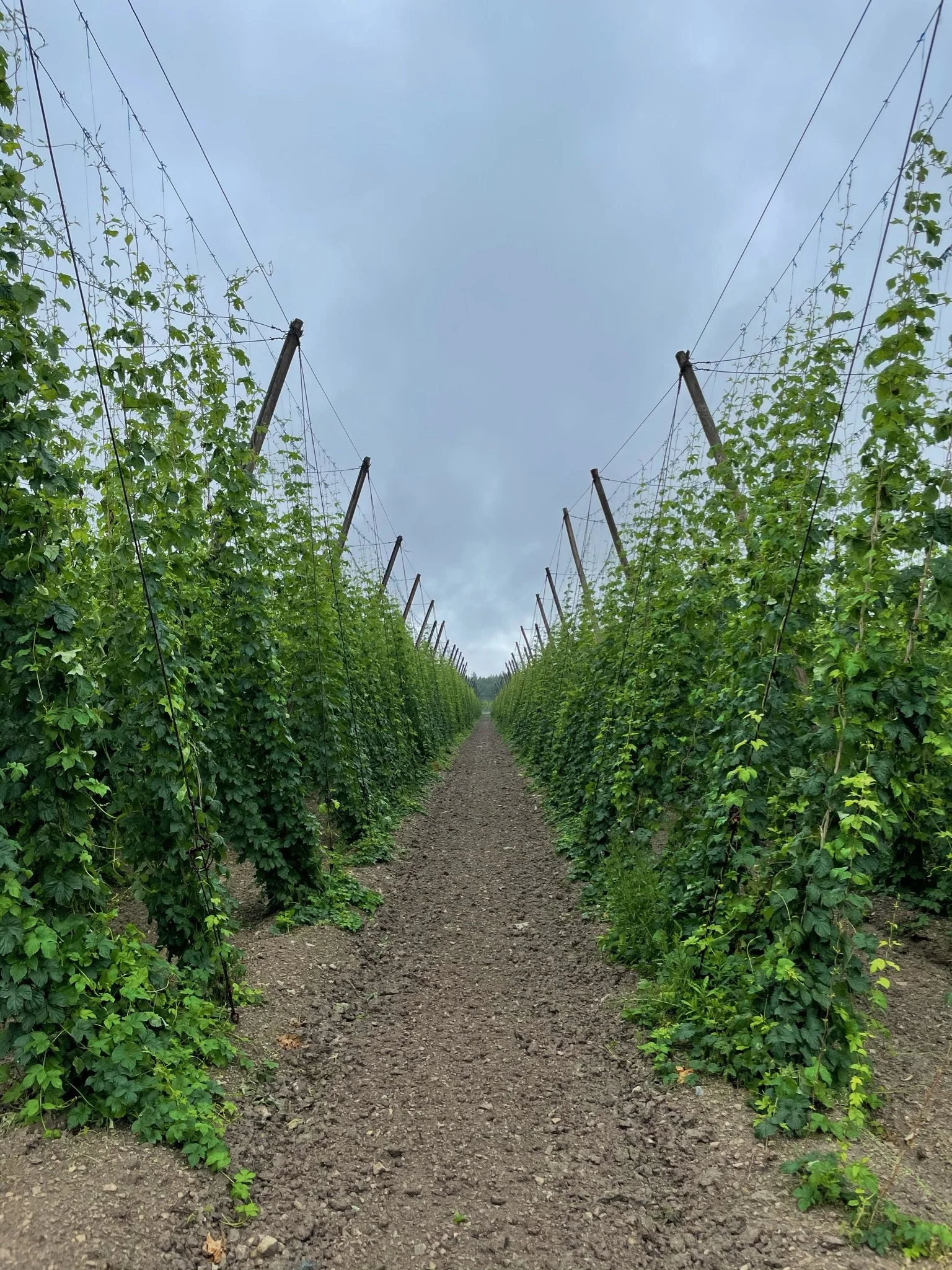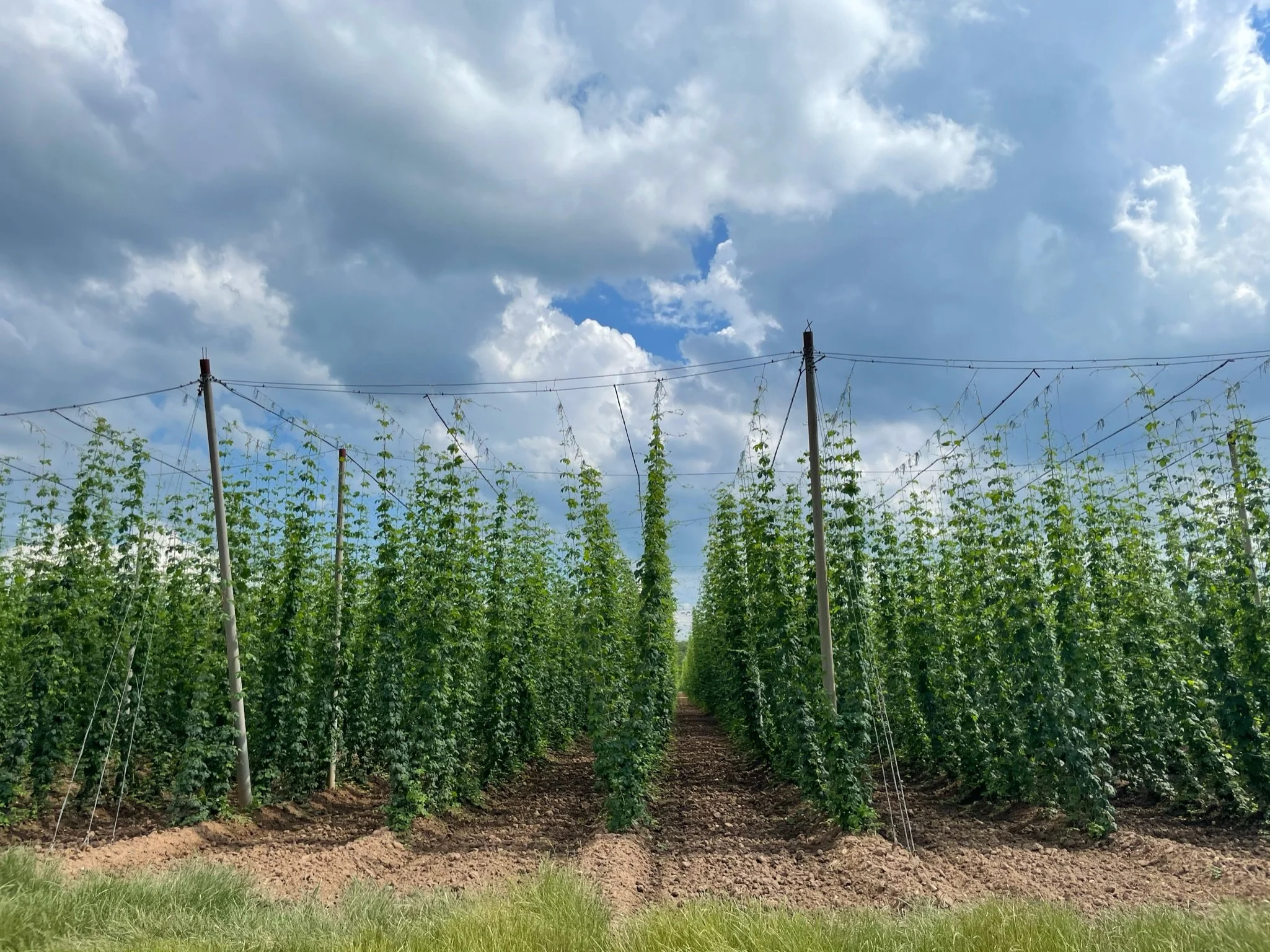Apr 12, 2022
Using AI to Build Climate-Resilient Hops
Editor’s Note: Agritecture will be publishing more content about its newest climate-resilient AgTech project in the Czech Republic in partnership with Microsoft and Asahi. This is our third announcement about the project. Read the first blog post on how the trio is strengthening hops and beer production in the face of a changing climate HERE, and watch the first webinar on the use of AI solutions for sustainable agriculture HERE.
When it comes to operating an agribusiness, the risks are high. Farmers have to manage everything crop-related, juggling the protection of crops from extreme weather, identifying and treating pests and diseases, and monitoring soil health so that crops have access to crucial nutrients - just to name a few.
With an increasing frequency of climatic threats, we need to help farmers minimize or, at the very least, manage their risks.

Arix Farm in the Czech Republic; image sourced from the Agritecture team
Implementing artificial intelligence (AI) solutions can reshape the industry, giving farmers smarter management tools for their crops.
Increasing in popularity as a means to revolutionize the industry, Forbes recently published an article about 10 ways AI has the potential to improve agriculture.
One of the eye-popping stats from this article is that “spending on AI technologies and solutions alone in agriculture is predicted to grow from $1 billion in 2020 to $4 billion in 2026.”
Tech companies are rushing to the field to launch the next AI solution that can use forecasting and predictive analytics to help farmers capture the best yields possible and help buyers understand their future supply, given the unique weather patterns brought by each new growing season.
First: what exactly is artificial intelligence?
In the simplest of terms, AI refers to the ability of computers to perform tasks that would typically require human intelligence. The goal is to create a smart computer system like humans to solve complex problems.
According to Alma Cardenas, AI for Earth and Ecosystems Global Sr Program Manager at Microsoft, “similarly to neurons in our nervous systems, computers can create algorithms to draw conclusions.” This involves a subset of AI: machine learning. It is a method of data analysis that identifies patterns and makes decisions from past data, with minimal human intervention.
Ramen Dutta, Co-Founder of Canadian Agtech company TensoAI, adds that “AI platforms ingest multiple data sources to train and improve models that inform decision-makers in real-time."
In the agriculture industry, this real-time data can lead to increased operational efficiencies and improved crop yields. And in a world experiencing more frequent and dramatic climatic shifts, real-time data and smarter, faster decision-making can be the difference between responding in a timely manner to save a crop and losing that crop.

Obora Farm in the Czech Republic; image sourced from the Agritecture team
But to achieve this, we need vast amounts of data.
Microsoft’s AI for Earth is “a 5-year, 50-million dollar initiative that aims at empowering people and organizations to develop innovative solutions to the way we monitor, model, and ultimately manage Earth’s natural systems.” This initiative is giving grantees access to tools like Microsoft cloud and AI technologies “to drive new data insights in the areas of agriculture, biodiversity, climate change, and water.”
To date, it has provided 850+ grants in 110 countries.
In 2021, Agritecture was awarded a grant from Microsoft under this bold initiative with the mandate to work together with Asahi Breweries, one of the world’s leading producers of beer and the owner of the iconic Pilsner Urquell brand.
The dream team is working together with hop farmers and technology providers like TensoAI to help the Czech legacy of beer and hops production flourish. Read the first For Hops project announcement to learn more.
Dutta shares that the For Hops project specifically wants to “utilize water as a constraint to grow hops,” given the severity of droughts in the Czech region.
Farmers’ hops are bought based on their alpha acid content. This key measure gives beer its aroma and bitter taste, and is crucial to making a good Pilsner. As a result, “giving farmers the ability to track how water is impacting the hops crop, specifically its alpha acid content, can allow farmers to increase yields and supply their harvest to beer manufacturers at a higher rate.”
The Planetary Computer is crucial to this mission.
Cardenas shares that Microsoft’s Planetary Computer “platform lets users leverage the power of the cloud to accelerate environmental sustainability and Earth science.”
-
The Data Catalog, hosted on Azure, gives users access to petabytes of data about Earth systems, for free. The For Hops project uses this vast array of satellite imagery data sources to train and develop models.
-
The APIs allow users to search for the data they need across space and time. Dutta shares that “this communication layer is important to us in automatically feeding the data for our data analysis and model development. It’s much easier than manually downloading and processing terabytes of satellite images.”
-
The Hub is a fully managed computing environment that allows scientists to process massive geospatial datasets. Dutta identifies that this will be a great help in investigating different satellite imagery from the data catalog. “We can quickly test different satellite sources alongside our models for accurate and automated results.”
-
The Applications put the Planetary Computer platform to work for environmental sustainability. This can be used to accurately estimate the amount of cropped vegetation vs non-cropped vegetation, for example.

Arix Farm in the Czech Republic; image sourced from the Agritecture team
FarmBeats is another crucial piece to the data-driven farming equation.
“FarmBeats is an insights platform that helps businesses realize value from their agricultural data,” according to Microsoft’s Digital Architect, Marko Marjanovic. “It allows users to acquire, aggregate, and process agricultural data from various sources like farm equipment manufacturers, weather, satellite, soil, sensor, drone, etc., without the need to invest in data engineering resources to build pipelines.”
Standardized data models make the analysis easier by “letting users query and reason through data from different sources in a consistent way, fuse data between data sources, and generate insights by rapidly training and building AI/ML models.”
Specifically in the case of the For Hops project, “Azure FarmBeats is helping to aggregate agriculture data sets into common data models, enabling the immediate use of existing AI models and easing the pressure to build new ones.”
This, in turn, “enables agriculture experts and hops growers to get relevant insights faster, recognize patterns, and provide relevant advisory on growing practices.”
This project is only a starting point.
With over 20 years of experience working in all facets of agriculture, Agritecture’s Lead agronomist, David Ceaser, shares that "the potential for this project and related projects are immense because it can bring a totally new perspective to farmers.”
“Farmers generally repeat their crop management practices year after year - because these practices have worked in the past. What farmers (and humans in general) don't realize is how things are changing in the future. So, a technology such as this, which can help prepare us for those changes, will be extremely beneficial to agriculture and society as a whole.”
AI can continue to revolutionize the agricultural industry if we’re willing to bring together the right minds and the right tools. It will take a combination of farmers, technology experts, agronomists, and software providers to make this change happen.



